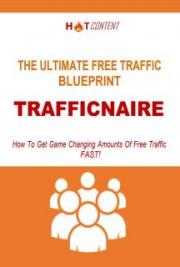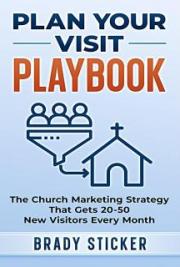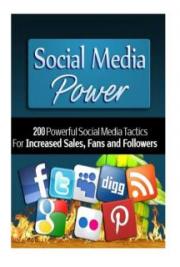Chapter III: Successful Copywriting
• Headlines - Life or Death of Your Advertising
• Discover THE Most Important Element of Your Web Site
• Long Copy or Short Copy
• Should I Say Me or We?
• Light a Fire Under Your Customers
20
Headlines – The Life or Death of Your Advertising
© 2000 Karon Thackston
http://www.ktamarketing.com
I’ll bet that headline got your attention! That’s the whole point of headlines… to get
the attention of your reader and cause them to want to read what’s below the
headline.
Headlines should make such an impact that the reader will be intrigued enough to
read the article, advertisement or story that follows. This is the most vital part of
your advertisement. If the headline isn’t interesting, you have a poor chance to get
your point across in the copy because the copy will most likely not be read.
So what goes into a power-packed headline? Well, here are a few suggestions:
1. Solve a problem – I read a great headline on a web site for custom
written poetry (www.peoplepoems.com). It said, ‘We can solve your gift
problem in 1 day for just $15.00’. Wow! If I were in the market for a gift,
and didn’t know what to buy, I would definitely read the copy that
followed that headline. It offered to solve my problem and that caught my
attention.
2. Use a statistic – One customer service page I saw stated, ‘It costs 30 to
40 times more to gain a new customer than keep an existing one.’ I know
as a small business owner that statistic really hits home. Every small
business owner is looking to save money in every area possible. Most are
very interested to read what needs to be done to keep their existing
customers.
3. State a quote – Did someone famous say something that applies to your
advertising? Can you put a new twist on an old saying? Use it! A weight
loss center might try something like, ‘If it’s not over ‘til the fat lady sings
then this is going to take awhile!’
4. Ask a question – Perhaps our same weight loss center might ask, ‘What
does it take to lose 20 pounds by summer?’ One word of caution with
asking questions… never ask a question that can be answered with, ‘No’.
For example, our weight loss center would not want to ask, ‘Do you know
how to lose 20 pounds by summer?’ The reader might very well answer,
‘No’ and skip the ad. If they knew how, they wouldn’t be reading your ad!
5. Create a mystery – A consumer’s watchdog group once began an ad
with ‘Who’s responsible for this!?’ That would definitely make me want to
find out what the heck was going on.
Above all, make your headline applicable to your target audience. Just as the
question, ‘Do you know how to lose 20 pounds by summer’ doesn’t apply because it
can be answered with no, it also alienates the target group.
Headlines should be thought out carefully and given a great deal of attention. They
are, after all, the life or death of your ad. Creating effective headlines will go a long
way toward building more powerful advertising. And powerful advertising makes
more sales!
21
Discover THE Most Important Element of Your Web Site
© 2000 Karon Thackston
www.ktamarketing.com
There are so many ingredients that go into making a successful Web site. Layout,
design, colors, graphics, photos, links and copy (text) are all included in the mix. Do
you know which of these is the most important element? Believe it or not, copy!
That’s right. Copy is where your attention should fall first when designing a site.
There are several reasons why this component requires special consideration. Let’s
look at three areas copy impacts and discover the true bearing it has on your site
and your visitors.
Gets Your Message Across
First and foremost, the copy on your Web site must get your message across to the
visitor. Its function is to provide information and/or sell a product or service,
depending on the purpose of your site. Photos can show products, but they can’t
make the sale by themselves. Stop and think for a moment. Have you ever
purchased anything based solely on a photo? The majority of customers will require
details about a product or service before buying. Copy is the bridge between
indecision and purchase.
Draws Attention
The headlines on your Web site draw more attention than the graphics or photos.
Stanford University, in conjunction with The Poynter Institute, recently completed a
four-year study that proved the importance of text over graphics on Web sites. (See
www.poynter.org/eyetrack2000/body.htm) According to this research ‘readers of
print newspapers looked first at the lead art element on a newspaper page and then
moved their eyes to the biggest headline.’ However, the study continues with, ‘Web
site readers tend to look first and most intently at plain text, passing lightly over
photos and images’. Contrary to popular belief, the copy on your site gets attention
from the visitor before the other elements.
Increases Chances of Good Search Engine Positioning
Robin Nobles, of the Academy of Web Specialists
(http://www.academywebspecialists.com/), recently wrote an article discussing
doorway pages. In it Robin made the following comment, ‘Since every page is
essentially a doorway into your site anyway, concentrate on building content. Now
you’re giving the engines just what they want to see these days: content’.
Unfortunately, many Web designers and do-it-yourselfers are not aware of the
importance of copy in the overall workings of search engines. Without solid content it
is almost impossible to get positioned well by search engines. The copy on the site
must be a delicate balance of repeated keywords and promotional information in
order to make sense to the reader and meet engine criteria. The more times your
keywords are presented within the copy, the greater your chance to receive a
position in the coveted Top 20. However, overload your copy with keywords and key
phrases and you’ll find yourself labeled as a spammer and be banned from the
engine – permanently!
There are also other factors involved with copy and engine position. The site title and
site description must be just as delicately created as the body copy in order to obtain
high rankings.
22
Considering these three facts brings a whole new light to the importance of excellent,
well created Web site copy. Before you decide on colors or graphics or photos or
design, stop and give due thought to the copy first. It will pay off in the long run!
23
Long Copy Works Better – Or Is It Short Copy?
© 2000 Karon Thackston
www.ktamarketing.com
Ahhh! The never-ending battle. I'm sure you've heard both statements made with
passion. Those that believe you must walk your customer through each and every
benefit preach, "Long copy sells better!" Proponents of this copywriting method say
customers need to be "lead" or "teased" into reading the next paragraph and the
next. Finally, when you have them drooling, you reveal the punch line.
On the other hand, advocates of short copy state that consumers today have
extremely short attention spans. Copy that's "to-the-point" is a necessity in order to
make a sale at all. According to these experts, the long, drawn-out copy gets tossed
right out the window by busy, impatient readers. Feed it to them fast or you'll lose
them to the competition. So exactly who's right? They both are!
No, I'm not being politically correct and I'm not avoiding the issue. The honest truth
is that all people in the world do not communicate in the same way. Due to this fact,
no one copywriting approach will work with every single product or service. As with
every other aspect of advertising, you must look to your target audience for the
answer.
I've used this analogy for years... when you begin to write a letter you do not sit
down and write then decide who you will mail the letter to. Before you put pen to
paper you know who the recipient of the message will be. You know their
communication style and how to best phrase the information so it will be well
received. The same applies to copywriting.
Let's say, just as an example, that your target audience consists of small business
owners. These business owners happen to all be Certified Public Accountants. Just
from this tiny bit of information I can tell you the target group is extremely busy, is
very detail oriented and has a bottom line mentality. These people are generally
analytical thinkers. Based on these facts, I would not dare write copy to this target
audience in long form. Why? It would most likely not be read.
The group above communicates in short, precise bursts. They are looking for the
bottom line first and an explanation afterwards. The most effective way to get the
attention of this group (in writing) is to keep is short, sweet and to the point.
Otherwise you will lose them in what they consider to be a "bunch of fluff". These
folks are definitely members of the short copy group.
So who belongs to the long copy group? People making an investment. I don't mean
an investment in the stock market (so to speak). I'm talking about people who are
going to make a large investment of time or money in anything. People who are
thinking of joining an affiliate program or multilevel marketing program would be
receptive to long form copy. Those who are going to invest many hours in a self-help
process would appreciate long copy. Let me explain.
When people are going to invest time or money (or both) in something they get
nervous. Customers need to be reassured that they are making the right decision.
They need to be reminded of why they need to purchase this product or service.
A wealth of information makes these prospective clients more secure about their
decision.
24
Yes, there are other target groups that would benefit from both long form and short
form copy. There are a multitude of them to say the least. As the advertiser, your
job is to discover which type of communication style will be received well by your
prospects. (A company named Myers Briggs offers an excellent course on defining
communication styles. I've participated in their training and found it to be highly
beneficial.)
So what about the writers who swear their copywriting approach will cause major
increases in response rates? What about the writers who say their method works for
any product or service?
"But this guy said his copywriting style caused a 50% increase in the direct mail
response rate of a jewelry store." I've heard this at least a hundred times. Maybe it
did. However, I've never been a real fan of statistics when used to prove a point
such as this.
There are two items in the above statement that cause me concern. The first is the
percentage. We don't know how many direct mail pieces were originally mailed.
Perhaps on the first campaign 50 envelopes were sent. Direct mail normally provides
a 1-3% response rate. If we allow the 3% in our example, that would mean the
original campaign received 1.5 responses. A 50% increase means the mailing using
the new copywriting style received 2.25 responses. Technically, that is a 50%
increase.
The second alarm that goes off is the phrase "response rate". Most advertisers don't
understand this statement. Response rate does not equal sales. Response rate
equals responses. Literally, if a person calls to ask a question in relation to the
mailing it is considered a response - even if that person never purchases.
I caution you to beware of those with "one size fits all" copy.
Yes, there are big names out there that will tell you that one particular style of copy
works to sell each and every product and service. Again, technically, I suppose they
are right. However, it does not sell to each and every target audience. If you don’t
get through to the target audience, the copy – regardless of who’s style it is – is a
waste of time and effort.
25
Should I Say Me or We?
© 2000 Karon Thackston
http://www.ktamarketing.com
Many of my clients are small businesses or home-based businesses. When we begin
writing copy for a web site, brochure, etc. one question never fails to surface.
“Should I say ‘Me’ or ‘We’ in my copy?”
One customer typifies the dilemma. She stated, “Karon, I am the business. It’s just
me. But I don’t want to seem small. I don’t know if people will trust me if they know
I’m the only person involved. However, it would be untruthful for me to have you
write the copy using ‘we’ because there is no ‘we’.”
So what’s the answer?
It’s Only Me
Let me tell you right up front – there is no shame in being a small or home-based
business. There is no reason to believe you have less to offer if you are the sole
employee of that business. As a matter of fact, being small has some very distinct
advantages.
If your quandary is whether your potential clients will snub you because you’re
working solo… don’t worry. Small and home-based businesses are extremely
common these days. From personal experience I will tell you that your clients will
ask questions about your years of experience, your successes, your references and
your ability to complete the job on time. I doubt they will blink an eye if you mention
you work alone. In which case, “me” is extremely appropriate.
The Whole Group
With that said, let’s now look at the other side of the coin. Do you plan to grow? With
that growth, do you plan to hire others to work for the business? Do you have
partners, advisors or some type of council/board that you work with to gain
information and direction? Are you a MLM or affiliate member with a down line?
If you answered “yes” to these questions you would be more likely to include “we” in
your advertising copy. You may be the entire make-up of the company at this point,
but if you have plans to add employees in the future you can save some time and
money by including “we” now.
This will eliminate the need to edit your web site copy, re-print your brochures or
change your sales letters in the future.
If you work alone but have advisors or associates who you consult, including we is
also the way to go. (Visit http://www.ktamarketing.com/aboutus.html) On this page,
you’ll notice that I provide information about myself and also explained who the
“associates” are. This helps your customers get a firm grasp on who you are and how
you do business.
None of the Above
There is one last option. Say neither. Your copy could be written in a way so that
only the business name is mentioned. For example, “ABC Company offers 14K gold
and diamond bracelets at 50% off suggested retail. Shop around. You will not find a
more extensive collection of fine jewelry at such reasonable prices. However, ABC is
26
more than willing to beat the competition on cost – even on sale items. Visit
www.abccompany.com today.”
By writing using only the company’s name, the dilemma of me or we is eliminated all
together.
Whichever you choose, be consistent. Using “me” on your web site, “we” in your
brochure and only the company name in your sales letters will cause some
confusion. Choose one and stick with it throughout all your copy. Doing so will help
create a flow in all the elements of your campaign.
27
Light A Fire Under Your Customers
© 2000 Karon Thackston
http://www.ktamarketing.com
Developing an effective ad takes a lot of steps. Most of them are pretty well known.
Develop an interesting headline, support your headline with benefit-filled copy, close
with an offer they can’t refuse, etc. Rarely, however, do I see mention of a very
important item. The call for action statement.
Call for action statements are those quirky little phrases that most of us make fun of.
You’ve heard them a thousand times before – “Sale ends Saturday” and “Call now,
this offer won’t last”! What is so special about these statements? Why do we need to
include them in our ads? What happens if we don’t?
An Inspiration to Move
Call for action statements give our ads urgency. They are the inspiration for
customers to get a move on and purchase now, before they get sidetracked. By
telling the customer when a promotion ends, or that they will save by acting now
rather than later, we encourage an immediate response.
How many times have you laid an ad down and walked away to take care of other
priorities? You meant to call the company in “just a minute” but it didn’t happen.
What causes us to make the call or visit the business right away? The fact that if we
don’t we’ll lose out on something.
Give Your Ad Priority
When you include a call for action statement, your ad becomes time sensitive. Your
ad takes priority over others the customer might encounter. To tell a prospect who is
looking for a dishwasher that your appliance sale ends Tuesday will cause that
customer to visit your store prior to another who might advertise “Everyday Low
Prices”. They’ll want to see your selection and pricing before they see the
competition’s. They know if they don’t visit you first, they might lose out on a deal.
Don’t Position Yourself As Last
So what happens if we choose not to include call for action statements in our
advertising? I’ll give you a prime example. Many years ago Sears (a United States
department store) decided it was tired of the Ad Game. They decided they would no
longer run specials or have sale pricing. Sears announced it would offer everyday low
prices. It told it’s customers they could visit at any time and receive it’s best cost on
any item Sears sold.
Almost immediately, Sears suffered a severe loss in business. Why? They still
advertised. Customers still knew they existed. They still carried quality merchandise.
What happened?
Sears discovered that, by removing the time sensitivity associated with call for action
statements, they had – in effect – positioned themselves last. When a customer
decided to make a purchase, they began looking for those who had both the
selection and price they wanted. Of course, sales and promotions played a big role in
the purchasing decision.
Customer would visit those who had time sensitive offers before going to Sears. Most
often, the customer would purchase from a retailer who they visited first or second.
28
They would never make it to Sears. Because there was no rush to get to Sears, that
store was pushed to the bottom of the shopping list and the retailer with the time
sensitive advertisement got the business.
Do Call For Action Statements Equal A Sale or Special
No. These phrases should be included in all advertisements. Even if you don’t offer a
discount, you can include call for action phrases.
A seminar leader might announce, “Call today. Seating is limited.” A consultant could
state, “Free 30 minute consultation is you schedule before June 5th.” A hairdresser
could say, “Clairol’s new line of hair coloring-only available through July.”
Here are some other call for action phrases to entice your customers:
Call while space is still available
Call today
Click Here
You can't afford to wait
___% discount if purchased before Jan. 31st
You'll notice changes as soon as you make the call
No interest until 2001
You'll see immediate results if you act now
Limited time offer
Don't Delay, offer ends May 1st
When you think you’ve completed the perfect ad, go back and read it again. Find a
way to make customers act now by including a call for action in your copy. You’ll
create a sense of urgency and position yourself at the top of their priority list.
29
Chapter IV: Offline Marketing With Online Results
• Free Offline Methods To Promote Your Internet Business
• Do It Like A Pro ~ How to Create A Brochure
30
Free Offline Methods To Promote Your Internet Business
© 2000 Karon Thackston
www.ktamarketing.com
All the talk these days seems to focus around ways to promote your Internet
business. Most of them center around online methods such as Ezine advertising and
banner ads. But there are some excellent, offline methods you can use to promote
your business, too. And they’re FREE!
Radio Talk Shows
There is practically an unlimited number of radio stations that bring experts in
various fields into their studios. I’m sure you have heard some of these shows on
your local radio stations. The guest expert answers calls from listeners who phone
into the radio station. You can be that expert! During the show, you have ample
opportunities to announce your Web address so listeners can visit your site. You
don’t pay anything to be a guest. It’s a win-win situation. The radio station needs
qualified guests to fill its airtime and you need the exposure. Everyone benefits.
Local Television Segments
Pay particular attention to the content offered on your local t







